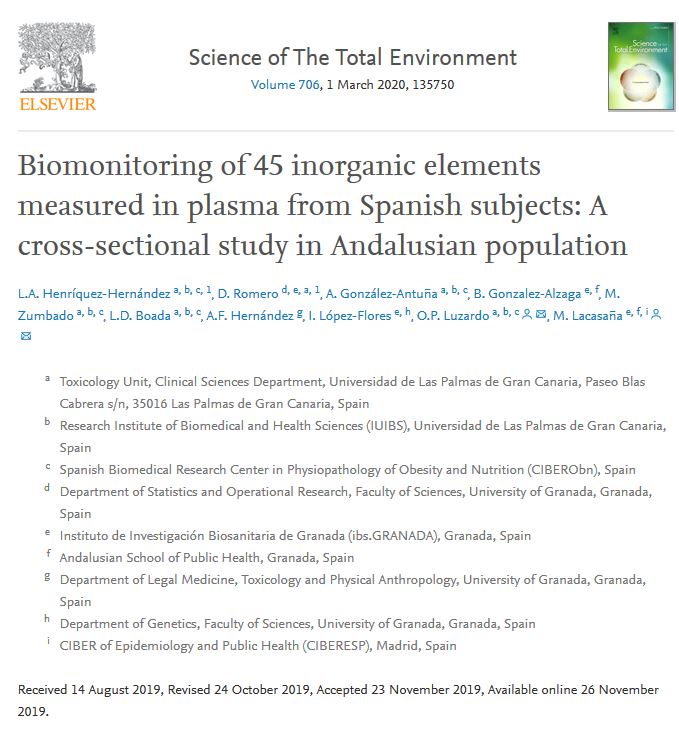
Heavy metals and other toxic elements are frequently detected in humans. Rare earth elements (REE) have arisen as a novel group of substances considered as emerging pollutants due to its dependence for high tech industry. We designed a study aimed to conduct the biomonitoring a total of 45 inorganic elements in the population of Andalusia (Spain). A total of 419 participants were recruited and their plasma samples analyzed. Concentration of elements, including elements in the ATSDR’s priority pollutant list and REE were measured by ICP-MS in the blood plasma of participants. Arsenic, copper, lead, selenium, antimony, strontium, and bismuth were detected in ˃98% of subjects. Median values of arsenic, mercury and lead were 1.49, 1.46, and 5.86 ng/mL, respectively. These concentrations did not exceed reference values published by international agencies. We observed a positive correlation between age and plasma concentrations of arsenic, mercury, antimony and strontium. Sum of elements was lower in the group of subjects younger than 45 years old (P = 0.002). Positive correlations were observed between body mass index (BMI) and plasma concentrations of barium, cerium, osmium, tin, and ytterbium. 7 out of 26 REEs showed a percentage of detection ≥ 90%. Bismuth, yttrium, and cerium were quantified at the highest concentrations (median value = 7.7, 0.19, and 0.16 ng/mL, respectively). We found that plasma levels of 6 REEs were higher among males, and a positive correlation between REEs and age was detected. The present results suggest a potential interaction with the human physiology that deserves additional research. Given the high persistence of these elements in the environment, and the significant technological dependence on them, future studies are needed to elucidate the potential sources of exposure and possible adverse effects on health, especially in the most vulnerable populations.


